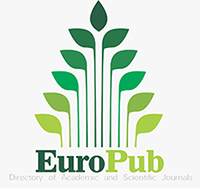Aquaporin-1 and Aquaporin-3 Density Decreases in Meniscal Tissue During Aging: An Experimental animal Study
Aquaporin-1 and aquaporin-3 density decreases at aging
DOI:
https://doi.org/10.5281/zenodo.12805644Keywords:
Menisci, aging, aquaporin 1, aquaporin 3, type I collagen, immunohistochemistryAbstract
Background: The menisci play crucial role in absorbing shock and providing stability thanks to their particular anatomy and physiology. Menisci exhibit histological, biochemical, and morphological degenerative changes during the process of aging. Aquaporins (AQPs) are membrane water channels that regulate the water contents of cells. We compared expression of aquaporin1 (AQP1), aquaporin3 (AQP3), and type I collagen in the meniscal tissues of young and aged rats using immunohistochemistry.
Methods: In this study, 14 Wistar albino rats (180-400 g) were used. Animals were divided into two equal groups; Group I: two-month old animals (n=7), Group II: 18-month-old animals (n=7). Meniscal tissues were dissected and examined histopathologically and immunhistochemically. After routine histological procedure, sections of 4-5 μm thickness were obtained and embedded in paraffin. Sections were stained immunhistochemically for AQP1, AQP3, and type I collagen with hematoxylin-eosin.
Results: Immunohistochemically, expression of AQP1, AQP3, and type I collagen were demonstrated in young and old rats. In aged rats, number of fibrochondrocytes was too few and cracks were too many compared to young rats. It was found that the immunoreactivity of AQP1, AQP3, and type I collagen in meniscal tissues were significantly reduced by aging.
Conclusions: Our results suggest that expression of AQP1, AQP3 and type I collagen in menisci tissue may be related to age.
Downloads
References
References:
King D. The function of semilunar cartilages. J Bone Joint Surg 1936;18: 1069-1076.
Herwig J, Egner E, Buddecke E: Chemical changes of human knee joint menisci in various stages of degeneration. Ann Rheum Dis. 1984; 43: 635–40.
Song Y, Greve JM,Carter DR, Giori NJ: Meniscectomy alters the dynamic deformational behavior and cumulative strain of tibial articular cartilage in knee joints subjected to cyclic loads. Osteoarthritis Cartilage 2008; 16: 1545–1554.
Takata K, Matsuzaki T, Tajika Y: Aquaporins: water channel proteins of the cell membrane. Prog Histochem Cytochem 2004; 39: 1–83.
Mobasheri A, Trujillo E, Bell S, Carter SD, Clegg PD, Martin-Vasallo P, Marples D: Aquaporin water channels AQP1 and AQP3, are expressed in equine articular chondrocytes. Vet J 2004;168(2):143-50.
Wang F, Zhu Y: Aquaporin-1: a potential membrane channel forfacilitating the adaptability of rabbit nucleus pulposus cells to an extracellular matrix environment. J Orthop Sci 2011; 16: 304-12.
Li J, Tang H, Hu X, Chen M, Xie H: Aquaporin-3 gene and protein expression in sun-protected human skin decreases with skin ageing.Australas J Dermatol. 2010; 51(2): 106-12.
Kuettner KE, Aydelotte MB, Thonar EJ-MA: Articular cartilage matrix and structure: a minireview. J Rheumatol 1991; 18: 46–47.
Ortak H, Cayli S, Ocaklı S, Soğut S, Ekici F, Tas U, Demir S: Age-related changes ofaquaporin expression patterns in the postnatal rat retina. ActaHistochem. 2013; 115: 382-388.
Kanter M: Thymoquinone attenuates lung injury induced by chronic toluene exposure in rats. Toxicol Ind Health 2011;27(5):387-95.
Pauli C, Grogan SP, Patil S, Otsuki S, Hasegawa A, Koziol J, Lotz MK, D'Lima DD: Macroscopic and histopathologic analysis of human knee menisci in aging and osteoarthritis. Osteoarthritis Cartilage. 2011; 19(9): 1132-41.
Musumeci G Loreto C, Carnazza ML, Cardile V, Leonardi R: Acute injury affects lubricin expression in knee menisci: an immunohistochemical study. Ann Anat. 2013; 195(2): 151-8.
Fisseler-Eckhoff A, Müller KM:(Histopathological meniscus diagnostic). Orthopade. 2009 ; 38(6): 539-45.
Verkman AS, Anderson MO, Papadopoulos MC: Aquaporins: important but elusive drug targets. Nat Rev Drug Discov 2014; 13(4): 259-77.
Mobasheri A, Wray S, Marples D: Distribution of AQP2 and AQP3 water channels in human tissue microarrays. J Mol Histol 2005; 36: 1-14.
Zeuthen T, Klaerke DA: Transport of water and glycerol in aquaporin 3 is gated by H+. J Biol Chem. 1999; 274(31): 21631-6.
Trujillo E González T, Marín R, Martín-Vasallo P, Marples D, Mobasheri A: Human articular chondrocytes, synoviocytes and synovial microvessels express aquaporin water channels; upregulation of AQP1 in rheumatoid arthritis. Histol Histopathol. 2004; 19(2): 43544.
Aharon R, Bar-Shavit Z: Involvement of aquaporin 9 in osteoclast differentiation.J Biol Chem. 2006; 281(28): 19305-9.
Liang HT, Feng XC, Ma TH: Water channel activity of plasma membrane affects chondrocyt emigration and adhesion. Clin Exp Pharmacol Physiol. 2008; 35(1): 7-10.
Bai C, Fukuda N, Song Y, Ma T, Matthay MA, Verkman AS: Lung fluid transport in aquaporin-1 and aquaporin-4 knockout mice. J Clin Invest. 1999;103(4):555-61.
Levin MH, Verkman AS: Aquaporin-3-dependent cell migration and proliferation during corneal re-epithelialization. Invest Ophthalmol Vis Sci. 2006; 47: 4365–4372.
Hara-Chikuma M, Verkman AS: Aquaporin-3 facilitates epidermal cell migration and proliferation during wound healing. J Mol Med. 2008; 86: 221–231.
Thiagarajah JR, Zhao D, Verkman AS: Impaired enterocyte proliferation in aquaporin-3 deficiency in mouse models of colitis. Gut. 2007;56:1529–1535
Zhu N, Feng X, He C, Gao H, Yang L, Ma Q, Guo L, Qiao Y, Yang H, Ma T: Defective macrophage function in aquaporin-3 deficiency. FASEB J. 2011; 25: 4233–4239.
Hara-Chikuma M, Chikuma S, Sugiyama Y, Kabashima K, Verkman AS, Inoue S, Miyachi Y: Chemokine-dependent T cell migration requires aquaporin-3-mediated hydrogen peroxide uptake. J Exp Med. 2012;209:1743–1752.
Verkman AS, Anderson MO, Papadopoulos MC: Aquaporins: important but elusive drug targets.Nat Rev Drug Discov. 2014 Apr;13(4):259-77.
Ghosh P, Taylor TK: The knee joint meniscus. A fibrocartilage of some distinction.Clin Orthop Relat Res. 1987; (224): 52-63.
Fox AJ, Bedi A, Rodeo SA: The basic science of human knee menisci:structure, composition, and function. Sports Health. 2012; 4(4): 340-51.
Li SB, Yang KS and Zhang YT: Expression of aquaporins 1 and 3 in degenerative tissue of the lumbar intervertebral disc. Genet Mol Res 2014; 13: 8225-8233.
Taş U, Caylı S, Inanır A, Ozyurt B, Ocaklı S, Karaca Zİ,Sarsılmaz M: Aquaporin-1 and aquaporin-3 expressions in the intervertebral disc of rats with aging. Balkan Med J 2012; 29:349-353.
Downloads
Published
How to Cite
Issue
Section
License
Copyright (c) 2024 Chronicles of Precision Medical Researchers

This work is licensed under a Creative Commons Attribution-NonCommercial-ShareAlike 4.0 International License.






